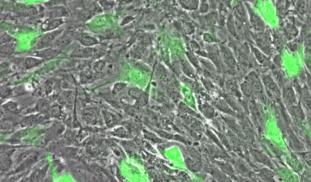Please wait...
About This Project
OncoSynergy, Inc.
The Ebola outbreak in west Africa has been declared a global emergency by the WHO with over 1,000 victims and no approved therapies. OncoSynergy is developing a readily manufactured experimental cancer drug, OS2966, which coincidentally targets the receptor hijacked by ebola to infect cells. This project aims to demonstrate that OS2966 inhibits ebola infection of human cells thus providing the impetus for expediting OS2966 for treatment of ebola.

Browse Other Projects on Experiment
Related Projects
Toward ethical and affordable antivenom solutions: Can anti-toxin be animal cruelty-free?
Snakebite envenoming causes over 100,000 deaths annually, yet current antivenoms depend on animal plasma...
Microplastics: Can engineered enzymes remove microplastics from the human body?
Polyethylene terephthalate (PET) microplastics have been detected in human blood and tissues, and linked...
Shutting down cancer’s recycling system with exosome-based therapy
Pancreatic cancer is one of the deadliest cancers because its cells survive by recycling their own components...





